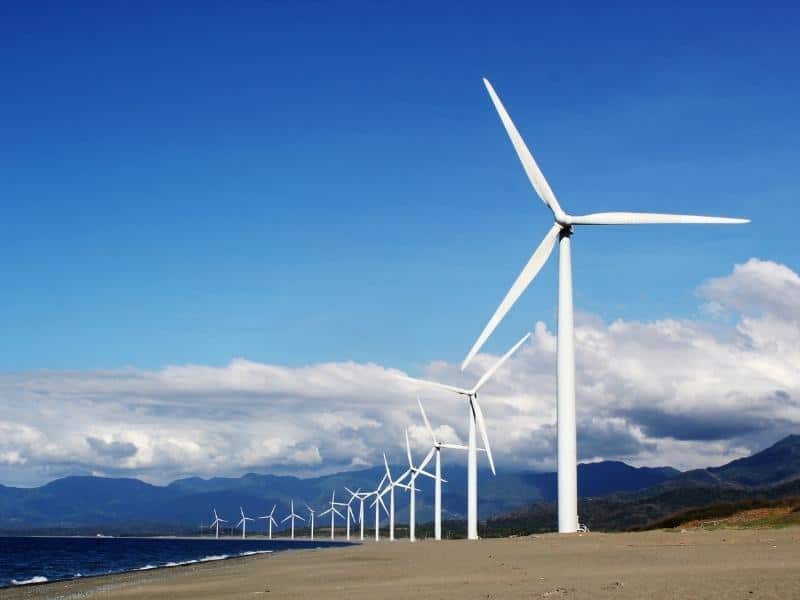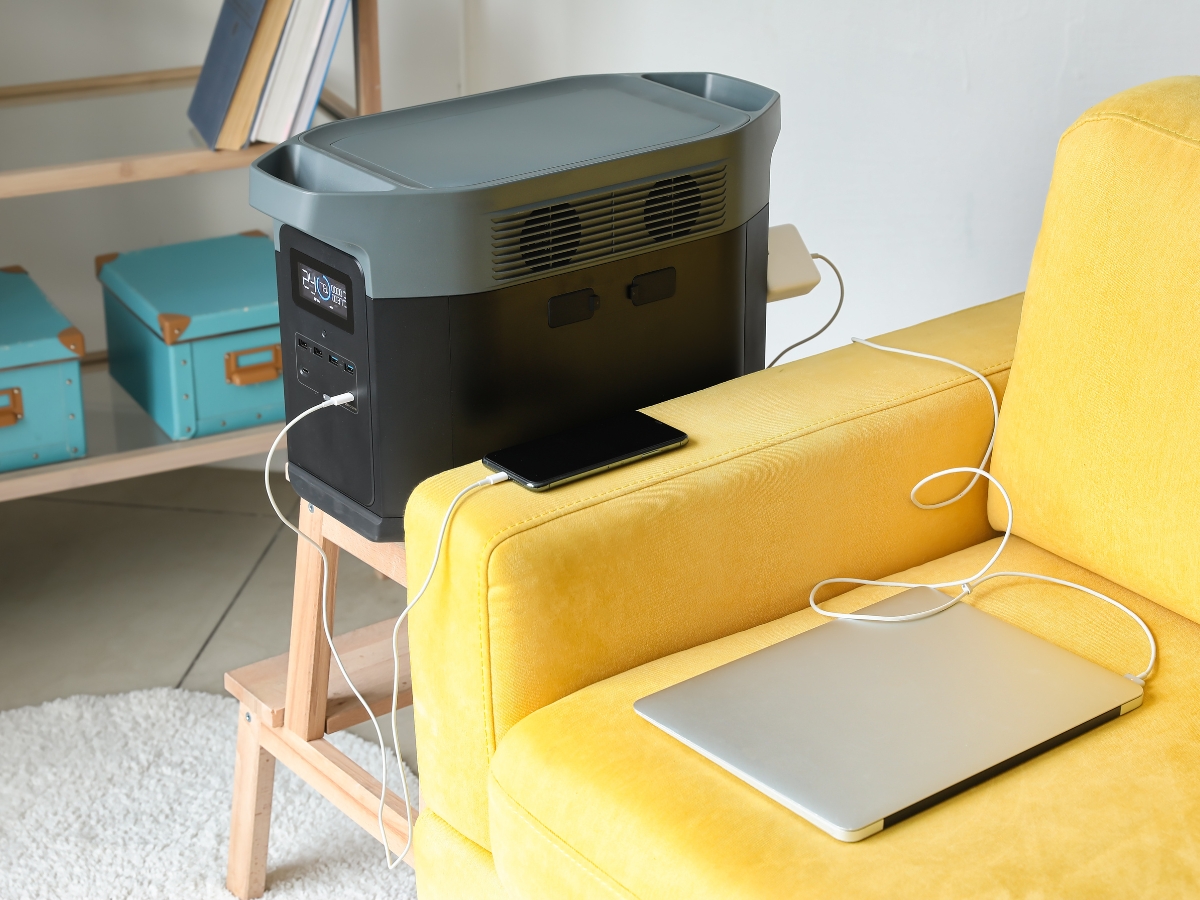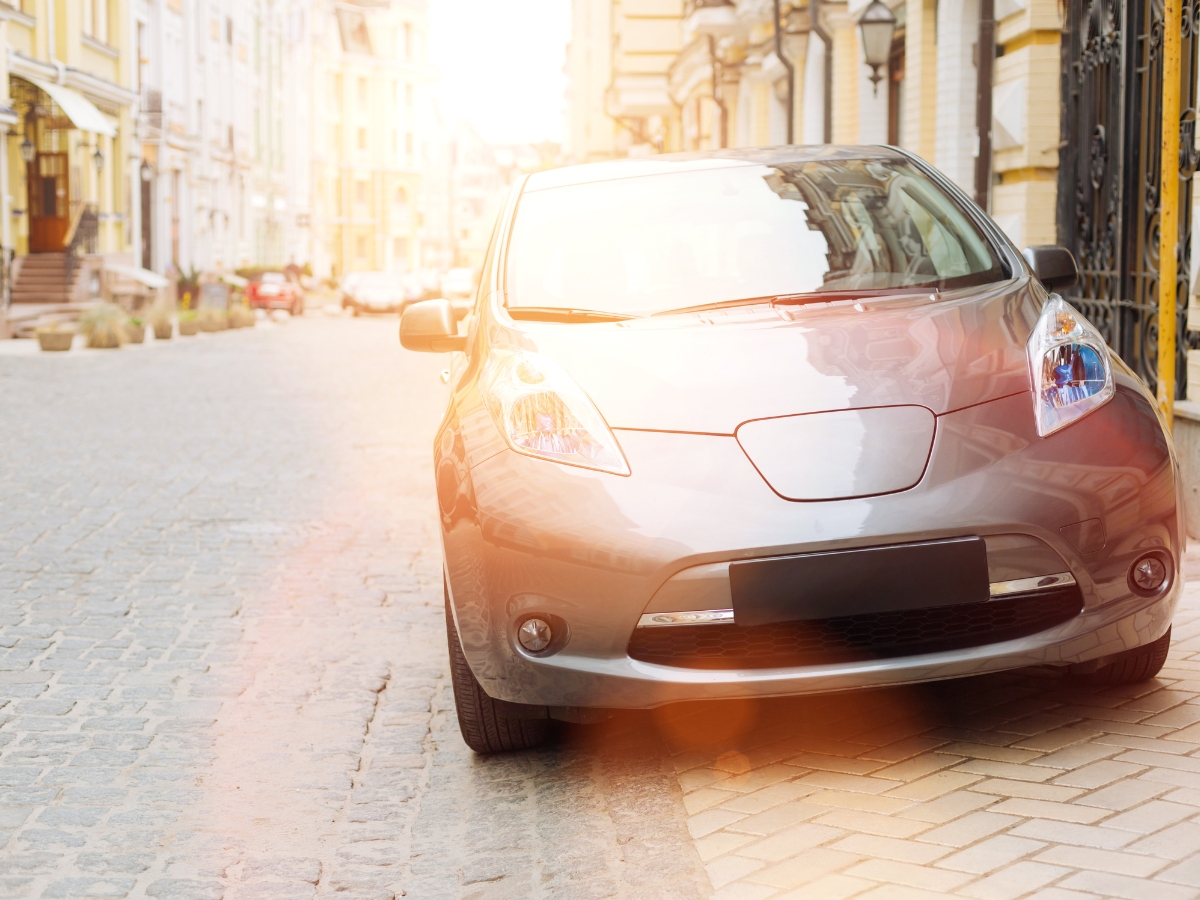Wind turbines, whether for industrial or domestic application, are expensive upfront, but the capital expenditure on a wind turbine must be viewed as a medium to long-term investment and not a short-term one. Aside from the upfront costs, wind turbines also have other costs like maintenance which can add to the operational costs over time.
Average commercial wind turbines with a 2MW capacity would cost between $2,6 million to $4million or around $1,3 million per MW. Small domestic turbines would cost between $3000 -$8000 per kilowatt of generated wind capacity, excluding the installation costs.
We need to consider the following when looking at the cost of wind turbines:
- How the costs are calculated for industrial
- Vertical Axis VS Horizontal Axis turbine costs
- Cost for domestic turbines
- What the maintenance costs are
- What other costs are involved with wind turbines
Now, let’s look at all the costs associated with wind turbines and then compare that to the potential return on investment.

How Are Wind Turbine Costs Calculated?
The cost of wind turbines is calculated based on generational capacity, so $/MW (Megawatt) for commercial turbines.
This cost is usually around $1,3million per MW of generating capacity for commercial and industrial turbines. While most commercial turbines average around the 2-3MW mark, some larger ones range from 8MW to 12MW.
Using that cost per MW, you can see that a standard 2-3MW turbine would cost between $2,6million to $4 million, and this would exclude installation costs.
The prices listed above are the cost of production of the turbine itself, and while this may seem high, the costs of wind turbines have decreased over the last decade or so as the technology behind them has improved.
The costs of wind turbines also vary depending on the type of turbine being used as Horizontal Axis Wind Turbines (HAWT) would have different costs to the Vertical Axis Wind Turbine (VAWT) as the design and construction is different.
The COE – Cost Of Energy
Before looking at the actual costs for wind turbines, we need to understand the Cost Of Energy or COE concept.
The COE determines the turbine’s economic efficiency and encapsulates production, operational, and maintenance costs compared to the generational efficiency and consistency of the turbine.
Bearing in mind that wind turbines are long-term investments, the overall viability of the turbine over its lifetime has to be carefully considered considering the amount of money spent.
The COE is about the turbine itself and requires assessments on the proposed sites regarding wind availability and consistency, whether adverse weather like storms and high winds could affect the generation, and the impact of the installation on the environment.
The cost of the turbine itself is usually around 65% of the total, and so this has to be weighed against all factors that could reduce the time and value of the return on investment.
What Is Wind Turbine Efficiency?
Wind turbines are rated by how much available wind energy they can capture and utilize. Because the wind is never constant, turbines never achieve 100% generational capacity.
In simple terms, a 1 megawatt (MW) wind turbine has a maximum generating capacity of 1 000 000 watts if it operates 24/7 and has the required minimum wind speed.
Most turbines operate between 35% and 65% capacity, so if we translate that to a 1MW turbine, the turbine generates between 350 000 W (350kw) and 650 000 W (650 kW).
The same formula applied to the VAWT turbine would yield between 250 kW and 400 kW across the same swept area. The swept area would be where the turbines are located over which the wind would blow.
How Turbine Efficiency Influences Investment
When it comes to wind turbines, the investors need to weigh up the ability of the turbine to generate electricity based on the available wind conditions at the site.
Horizontal axis systems placed upwind provide higher efficiency returns than VAWT systems. They achieve a typical usage efficiency of 40%-50% vs. the 25%-40% of the vertical axis turbines.
When investors consider wind turbines, they need optimum generational efficiency from their investment, and currently, the HAWT systems offer the best ROI.
Simultaneously, there have been developments in VAWT design and efficiency. Still, the cost of those turbines is higher and makes them more expensive and therefore less attractive as an investment option.
Why VAWT Wind Farms Could Become A Better Option?
While the status quo is well in favor of HAWTs, there is some light at the end of the tunnel for VAWT systems to supersede their HAWT counterparts in wind farm applications.
A study done by Stanford University shows that the strategic use of Vertical Axis Turbines would resolve one of the biggest issues in this industry: space.
HAWT turbines are massive, and their blade and rotational diameter require large amounts of space to operate in, which creates an issue for proposed wind farm locations, especially if they are onshore.
Land-based wind farms are limited by space, unlike offshore systems, and as such, the large diameter HAWT systems limit the number of turbines that can be placed in one location.
The Stanford study showed how VAWT configurations could accommodate far more turbines in the same space and so produce more electricity than HAWTs as their vertical axis design requires much less space to operate in.
This model showed that HAWT farms produce around 3W per square meter of space while the VAWT configuration would produce around 30W per square meter.
Capacity and Efficiency
Despite the cost factor of VAWTs and their comparative inefficiency, the significantly increased generational capacity and greater density make them an ideal option for effective deployment on land where space is limited.
The same principle has been suggested for offshore farms. Another benefit of the VAWT systems is that their generating components are placed much lower, making access and maintenance easier and less costly.
The other consideration for VAWTs is that they don’t need to be wind direction-orientated to work as their blades can capture wind blowing from any direction.
HAWTs need a nacelle and orientation systems to constantly capture maximum energy from the prevailing wind direction.
What Are The Wind Turbine Operational Costs?
It is also evident that the capital costs for wind turbines are high. Still, they are offset against generational returns and very low operational costs as they require some power to run.
Even so, wind turbines do have some running costs outside of maintenance. Wind turbines do require some electricity to run, but this isn’t very important compared to the fuel costs of other generating plants.
There are associated fuel and operational costs with other forms of electricity generation like coal.
Coal-fired power plants need coal and other technologies that incur expenses to operate the station. With wind turbines, there is no fuel required, especially for the Horizontal Axis systems, as their blades utilize the power of the wind to start moving.
HAWT vs. VAWT Costs
Let’s look at the differences in costs between commercial and domestic wind turbines and determine whether there is a difference between the HAWT and VAWT systems and the maintenance and service costs for both.
There are different versions and designs of both HAWT and VAWT turbines. While some may be more efficient in generational capacity, the design and production costs can be prohibitively expensive and, therefore, not commercially viable.
The typical three-bladed horizontal axis wind turbines are the cheapest and most cost-effective turbines available. This is why most wind farms and capital investments are made in HAWT systems.
Why HAWT Systems Are Preferable At Present
At the moment, HAWT turbines offer the best generational capacity as they can utilize more of the wind flowing across the blades. So all the blades are used to create torque and generate electricity.
The VAWT Eggbeater systems have an inefficiency aspect as only some of the blades collect the wind-producing torque on the drive shaft, while the other blades follow or are ‘dragged’ behind.
This is why VAWTs are not as efficient in producing electricity, suffer more breakdowns, and require more maintenance, which adds to the cost profile.
VAWT system components like the rotor and support structures are heavier, and this increased mass leads to greater production costs.
While the lower maintenance costs are a factor, they do not balance out when considering they have lower energy capture and higher rotor costs than HAWT systems.
Why Wind Turbine Costs Have Decreased Over The Last Decade
Back in 2010, wind turbine costs were between 44% and 78% higher than they are today and have been attributed to many key factors.
- Improvements in technology and efficiency allow turbines to generate more electricity at the same sites with the same wind speeds. This has been due to the development of larger rotor diameters and increasing hub heights.
- In 2019 the global average weighted cost of producing electricity from new onshore wind farms was around $0,053 per kWh, while the current cost for a new project is just $0,03.
- Improvements in yield and capacity and reduced operational and maintenance costs are all factors contributing to ongoing declining costs of wind turbines and plants.
What Do Domestic Wind Turbines Cost
The domestic turbines are smaller, so their cost is based on $/kW (Kilowatt) calculation rather than $/MW as seen in the industrial turbines.
The average domestic turbine with a generating capacity of 100kW would cost around $3000 – $8000 per kW, not including the installation costs.
Some smaller domestic turbines of around 50 kW or less can sell for as little as $10 000.
A 10kW domestic turbine that would be enough to power a large home would cost about $50 000 – $80 000 installed in the region.
A wind turbine for a small home can be as little as $1000, and you can even get them for around $300!
How Much Are Installation Costs For Commercial Wind Turbines?
Aside from the turbine’s cost, even for smaller wind turbines, the installation cost can be high compared to other renewable energy sources. Several factors influence the cost of installation.
- The project location
- Cost of construction contracts
- Cost of finance
- Quantity of turbines ordered
Additional costs would also include
- The wind resource assessment fees
- Site analysis costs
- Construction expenses
- Transformers
- Utility upgrades
- Metering and protection equipment
- Insurance
- Legal & consultation fees
- Warranty costs
- Taxes
These add up to some serious dollars, but the cost of installed turbines per kWh has declined over the years. A 2020 report from Statista.com shows the average installed cost for onshore turbines per kWh at $1,355, a 9% decline from 2019.
This would cost $1,35 million per MW for onshore turbines.
What Are The Maintenance Costs On A Wind Turbine?
Surprisingly, maintenance costs on wind turbines are relatively low compared to the capital costs, with annual estimates only running to about $42000 /MW – $48 000/MW. This would cover oil changes, gearbox maintenance, and any structural repairs needed.
However, where turbines are very tall or installed offshore, these costs would be higher. Access to the control gear may require specialized safety equipment and more qualified engineers or wind technicians.
Between 2017 and 2027, US wind farm owners are expected to spend more than $40 Bn on O&M (Operations And Maintenance) as the turbines age and the number of turbines in the US is projected to rise from 50 000 to 70 000 by 2030.
How Much Money Do Turbines Generate?
While the focus has been on the cost, we cannot only look at this in terms of efficiency as we need to also consider what the wind turbine will generate in revenue to have a complete picture.
As we know, turbines do not run at maximum generating capacity, so the table below shows how much money the various size turbines would generate over their break-even period of between 11-14 years and based on $0,02 per kWh produced.
| Size in MW | Annual Revenue @35% | Annual Revenue @ 50% | Annual Revenue @65% | Annual Revenue @ 100% |
| 1M | $ 61 320 | $ 87 600 | $ 113 800 | $175 200 |
| 2,5MW | $ 153 300 | $ 219 000 | $ 284 700 | $ 438 000 |
| 4MW | $ 245 280 | $ 350 400 | $ 455 520 | $ 700 800 |
As you can see from the table, the drive to improve efficiency in turbines has a huge influence on the revenue that these turbines can generate for investors.
With the demand for renewable clean energy increasing and the related costs of wind turbines decreasing with improving technology, wind turbines will play a more critical role in the energy supply to the world over the next 30 years.
Resources
- https://www.statista.com/statistics/506774/weighted-average-installed-cost-for-onshore-wind-power-worldwide/
- https://large.stanford.edu/courses/2016/ph240/brown2/
- https://www.energy.gov/eere/wind/articles/vertical-axis-wind-turbines-could-reduce-offshore-wind-energy-costs
- https://www.irena.org/costs/Power-Generation-Costs/Wind-Power
- https://www.wind-works.org/cms/index.php?id=64&tx_ttnews%5Btt_news%5D=2220&cHash=b55932dfebd049ab01c1d968670afc1e
- https://sfenvironment.org/small-wind-turbine-a-consumer-guide-faq
- https://www.windpowerengineering.com/vawts-replace-hawts/
- https://www.reutersevents.com/renewables/wind-energy-update/us-wind-om-costs-estimated-48000mw-falling-costs-create-new-industrial-uses-iea



